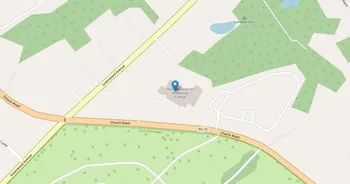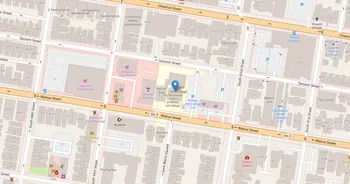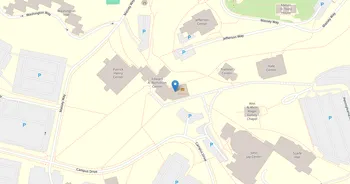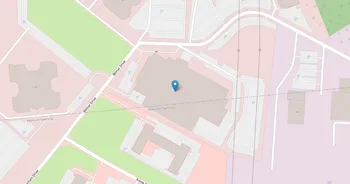Reading Hospital School of Health Sciences (RHSHS) : Overview, Courses, Scholarships & Rankings
About Reading Hospital School of Health Sciences
Set beside Reading Hospital, the School of Health Sciences is known for patient-centered training that blends classroom learning with clinical practice. Students use skills labs and simulation spaces while faculty keep feedback practical. Advising, tutoring, counseling, and library support round out a close-knit, evidence-based culture. It's serious work, but nobody's doing it alone.
Student life is focused yet lively, with service-minded clubs, study groups, and community outreach. Career preparation is hands-on through clinical placements, mentorship, and help with resumes and interviews that connect students to hospital teams and regional employers. Reading offers parks, coffee shops, a friendly arts scene, and milestone moments like white coat or pinning that often mark the move from learner to professional.
Key Institutional Details
Contact & Profile
Academic & Institutional
Academic Programs & Fields of Study
Reading Hospital School of Health Sciences (RHSHS) offers 4 degree programs across 1 major academic fields, graduating approximately 122 students annually. The most popular fields by graduate volume are Health (4 programs, 122 graduates). Explore program details, award levels, and graduate demographics below.
Health (4 programs, 122 graduates)
Healthcare Professions, Medical Sciences and Clinical Practice
| Program Name | Graduates | Gender Distribution | Award Levels | CIP Code |
|---|---|---|---|---|
| Registered Nursing | 57 |
|
Certificate (≥2 yrs)
|
51.3801 |
| Emergency Medical Technology | 53 |
|
Certificate (1-2 yrs)
|
51.0904 |
| Surgical Technology | 8 |
|
Certificate (1-2 yrs)
|
51.0909 |
| Radiologic Technology | 4 |
|
Certificate (≥2 yrs)
|
51.0911 |
Admission Requirements & Test Scores
Comprehensive overview of admission criteria, standardized test score ranges, and application requirements for prospective students at Reading Hospital School of Health Sciences (RHSHS).
Application Requirements
Data based on IPEDS for 2022-2023 academic year. Test score ranges represent the middle 50% of admitted students (25th-75th percentile). Requirements may vary by program.
Tuition, Fees & Estimated Costs
Overview of tuition rates, housing, and other annual education expenses for undergraduate and graduate students
Financial Aid & Student Support
Summary of scholarships, grants, student loans, and financial aid statistics for undergraduate students
Student Success Metrics
Graduation rates and post-graduation earnings to help assess student outcomes and long-term value of education.
Loan Burden & Repayment Outcomes
Breakdown of loan repayment rates and student debt levels by income and dependency status.
Frequently Asked Questions
Find answers to the most common questions about Reading Hospital School of Health Sciences (RHSHS)
How much does it cost to attend Reading Hospital School of Health Sciences (RHSHS)?
The annual tuition at Reading Hospital School of Health Sciences (RHSHS) is $14,271 for in-state students. When including room and board, books, and other expenses, the total estimated cost is approximately $35,579 for in-state students. Additional costs include room and board $9,937 (on) / $11,458 (off) and books and supplies $1,210.
Data based on IPEDS program completions for 2022-2023 academic year. Tuition and cost estimates are approximate and may not include all fees, personal expenses, or transportation costs.
What academic programs and degree levels does Reading Hospital School of Health Sciences offer?
Reading Hospital School of Health Sciences (RHSHS) offers 4 academic programs across 1 major fields of study, with available degree levels: Certificate (1-2 yrs), Certificate (≥2 yrs).
Most popular program areas include:
- Healthcare Professions, Medical Sciences and Clinical Practice (4 programs)
Data based on IPEDS program completions for 2023-2024 academic year. Numbers reflect programs where students graduated, not all offered programs.
What is the acceptance rate for Reading Hospital School of Health Sciences?
Reading Hospital School of Health Sciences (RHSHS) has an 20.4% acceptance rate and a 100% yield rate, making it highly selective.
Admission statistics breakdown:
- Total applicants: 98
- Students admitted: 20
- Students enrolled: 20
Data based on IPEDS for 2022-2023 academic year. Admission statistics may vary by program and application cycle.
What financial aid and scholarships are available at Reading Hospital School of Health Sciences?
Reading Hospital School of Health Sciences (RHSHS) provides financial aid to 3% of first-time, full-time students, with average grants of $6,654 and average loans of $6,897.
Average financial aid amounts by type:
- Pell grants: $4,511
- State/Local grants: $3,948
- Federal loans: $6,897
The university supports 5 students with grants and 8 students with loans annually.
Data based on IPEDS for 2022-2023 academic year. Financial aid amounts and percentages may vary by program, enrollment status, and individual circumstances.
What is the average salary for Reading Hospital School of Health Sciences graduates?
Reading Hospital School of Health Sciences (RHSHS) graduates earn a median salary of $71,955 after 6 years and $74,572 after 10 years.
The salary range 10 years after graduation spans from $50,577 (25th percentile) to $95,432 (75th percentile).
Data based on IPEDS for 2022-2023 academic year. Salary data reflects graduates who received federal financial aid (approximately 60% of all graduates). Actual earnings may vary significantly based on program, location, and individual circumstances.
Related Universities




Found something useful? Help others discover it too! Share with friends, on social media, or save for later - every share helps someone find the information they need.